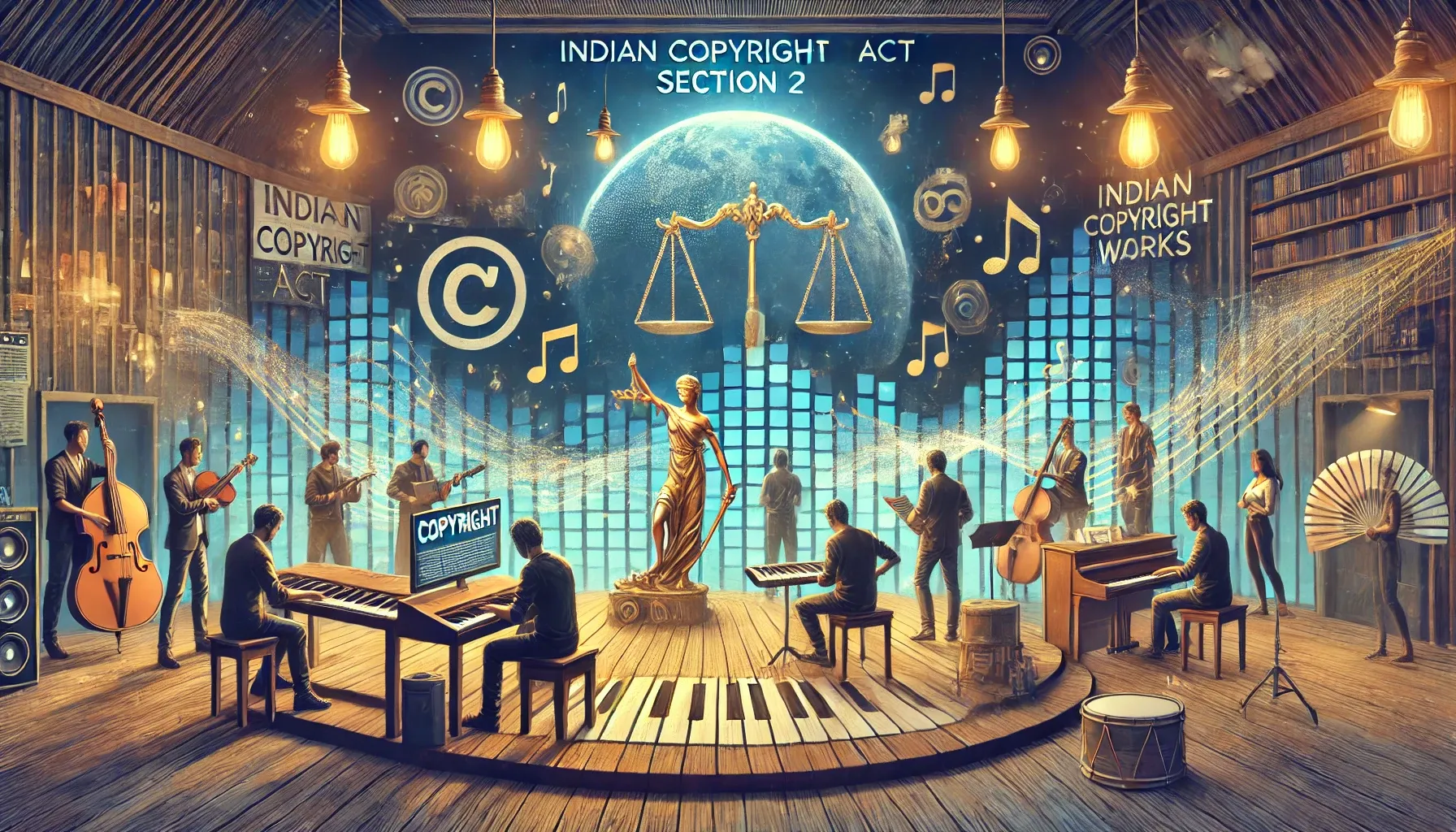Copyright in musical works safeguards the rights of creators, including composers and lyricists, by providing exclusive control over their compositions. It fosters innovation, ensures financial rewards through royalties, and balances the interests of original and remix creators.

Introduction
The music industry is a vibrant and dynamic domain where artists and musicians channel their creativity into crafting melodies that evoke emotions and captivate audiences. In India, the legal framework provided by copyright law plays an essential role in safeguarding these musical creations. It ensures that the creators, including composers, lyricists, and music producers, receive due recognition and financial compensation for their contributions. By offering robust protection, copyright law fosters a culture of innovation and authenticity, thus securing the rights of creators in an industry driven by originality.
Copyright in Musical Works Under the Indian Copyright Act
The Indian Copyright Act defines "musical work" under Section 2(p)[1] as a composition of music, represented through graphical notation, while explicitly excluding accompanying lyrics or actions intended to be performed alongside the music. This definition emphasizes the protection of the musical arrangement as a standalone creation, distinct from other artistic components.
Copyright in musical works provides creators with exclusive rights to their original compositions, ensuring comprehensive legal protection. These rights enable creators to control how their works are used, prohibiting unauthorized copying, distribution, performance, or sharing. Recognized as a vital form of artistic expression, musical works are safeguarded under the Copyright Act to uphold the rights of creators and encourage innovation within the domain of music.
Key Features of Copyright Protection
- Exclusive Control: Creators have the right to authorize or prohibit the reproduction, distribution, or public performance of their works.
- Revenue Generation: Copyright enables artists to monetize their creations by earning royalties and licensing fees.
- Encouragement of Creativity: By safeguarding the economic interests of creators, copyright serves as an incentive for continuous artistic endeavors.
Author of the Musical Work
Definition of an Author
Section 2(d)(ii)[2] identifies the composer as the author of a musical work. Furthermore, Section 2(ffa)[3] defines a "composer" as the individual who composes music, irrespective of whether it is recorded in graphical notation.
Joint Authorship
In cases of collaborative creation, the concept of joint authorship is recognized under Section 2(z)[4]. This provision applies when multiple individuals contribute to a musical work, and their contributions are inseparable. Collaborative efforts are thus protected, ensuring equal rights and ownership for all contributors.
Duration of Legal Protection
The term of copyright protection for musical works is outlined in Section 22 of the Act[5], differing based on individual or joint authorship.
Individual Works
For musical compositions published during the lifetime of the composer, copyright protection extends to 60 years following the year of the composer’s death. This provision ensures that the artist's heirs retain control over the work for a significant period.
Joint Authorship
For jointly created works, the term of protection continues until 60 years after the death of the last surviving author. This ensures that all collaborators and their descendants can benefit from the intellectual and monetary gains of the work during the specified timeframe.
Understanding Music Copyright: Ownership, Rights, and Protection
Music copyright encompasses two primary aspects: master copyright and composition copyright.
1. Master Copyright
This relates to the sound recording and is typically controlled by producers. Owners of the master copyright have exclusive rights over the reproduction and distribution of the recorded music, enabling them to regulate its use and receive compensation.
2. Composition Copyright
This aspect covers the melody, lyrics, and arrangement of a musical piece. Composers or songwriters hold the composition copyright, granting them control over how the work is used or performed. This ensures protection of their intellectual property and allows them to authorize its use.
Automatic Establishment of Copyright
When musicians or songwriters create music or lyrics, copyright is automatically established. This inherent legal protection ensures that creators have control over their works without requiring immediate registration.
The Importance of Registering Copyright
Although copyright is established automatically, registering a musical work offers several benefits:
- Solid Evidence of Ownership: Registration provides official documentation of ownership, which serves as concrete evidence in disputes.
- Enhanced Legal Protection: It strengthens the creator's legal position and offers additional remedies in case of infringement.
- Deterrent Effect: Registration signals seriousness in protecting intellectual property, discouraging unauthorized use.
- Access to Legal Remedies: Registered works allow creators to claim statutory damages and recover legal fees in litigation.
- Global Protection: Registration facilitates cross-border protection under international treaties, ensuring global coverage.
- Commercial Opportunities: Registered copyrights enhance the value of musical works, increasing opportunities for licensing and monetization through partnerships with publishers, streaming platforms, and film production companies.
Interplay Between Remixing and Copyright
Remixes present a unique challenge in copyright law, especially when the original composition is protected. While the Copyright Act does not explicitly define "remix," it typically involves modifying beats or altering lyrics from the original work.
The song "Tamma Tamma" serves as an example of remix culture, where the original work was modernized and used in the movie Badrinath Ki Dulhaniyaa. Such adaptations must balance the rights of the original creators with those of the remix creators to avoid copyright infringement.
Legal Protections for Remix Creators
Section 51 of the Copyright Act[6] addresses infringement and provides exceptions if:
- The remix creator notifies the original owner of their intent and pays royalties in advance.
- The new work does not mislead the public about the original creator’s identity.
- The remix is made only after two years from the release of the original work.
However, determining the level of originality in a remix and the adequacy of royalties remain contentious issues.
Legal Perspectives on Consent and Modification in Musical Works: Case Analysis
The legal interpretation of consent and modification in musical works has varied across cases, reflecting the complexities of copyright law. In Gramophone Co v. Super Cassettes[7], the court highlighted the necessity of obtaining the consent of the original owner of a musical work before making modifications. This established a strict standard to protect the rights of creators.
Conversely, in Gramophone Co v. Mars[8], the court adopted a more flexible approach, holding that if the conditions under Section 52(1)(j)[9] of the Copyright Act are fulfilled, modifications may not constitute infringement, and prior consent may not be required. This case demonstrated the potential for lawful exceptions within the statutory framework.
Further clarity was provided in Super Cassette Industries Limited v. Bathla Cassette Industries Pvt. Limited[10], where the court ruled that altering the vocal performance of a singer was impermissible, as it constitutes an integral part of the song. The judgment reinforced the requirement for prior consent under Section 52(1)(j)[11] to safeguard the original essence of musical works.
These rulings collectively underscore the nuanced legal standards governing consent and modification in musical works. They emphasize the need for strict adherence to the provisions of the Copyright Act, balancing the protection of creators' rights with the permissible boundaries of use and modification.
Conclusion
Copyright in musical works is a cornerstone of the Indian music industry, safeguarding the rights of creators while fostering innovation and collaboration. The framework ensures exclusive control over compositions, offers financial incentives, and enables global protection. From individual and joint authorship to master and composition copyrights, the legal structure supports artists in navigating a complex industry. Moreover, the interplay between remix culture and copyright highlights the need for a balanced approach that respects the rights of both original and remix creators. By registering their works and leveraging copyright laws, artists can secure their creations and continue to thrive in this dynamic landscape.
[1] The Copyright Act, 1957, s. 2(q).
[2] Id. at s. 2(d)(ii).
[3] Id. at s. 2(ffa).
[4] Id. at s. 2(z).
[5] Id. at s. 22.
[6] Id. at s. 51.
[7] 1995(33) DRJ 333.
[8] AIR 2001 SUPREME COURT 2885.
[9] The Copyright Act, 1957, s. 52(1)(j).
[10] 2003 (27) PTC 280 (DEL).
[11] Supra at 9.


